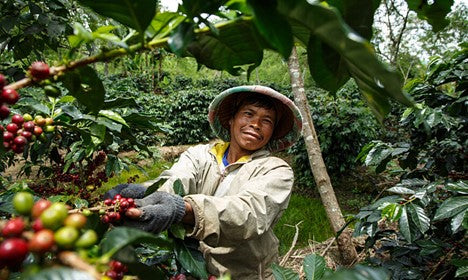
P.C.: Fairtrade.net
As the coffee industry is becoming progressively complex, more and more baristas are taking their passion and experimenting with it. Often while entering the local coffee shops, you would have come across the word “single-origin” coffee on the menu list. Or maybe saw it as the highlight of many brand advertisements on social media platforms or witnessed your local baristas touting about their brews made of single-origin coffee.
So, what exactly is “single-origin” coffee and is it better than your regular blends? Let’s find out.
What is single-origin coffee?
Keeping it in simple words – single-origin beans are all sourced from a single place, usually a particular region or country. It differs from blended coffee, which is made with coffee beans from multiple places.
Single-origin beans are often lightly roasted to sustain their unique flavour. Possessing the characteristics of the same region – single-origin coffee tends to be available only at certain periods of the year.
It provides the opportunity for people to experience an exclusive taste at the purest it can be.
Difference between Single-origin coffee and regular blends
Simply put, a coffee blend, blends beans from different countries or regions around the world to achieve a unique expression of flavour, acidity, and body, while a single origin comes from one specific farm or region.
Some blends are made for mere experimentation, while others are for the fulfilment of the desired profile. When done precisely, they create a harmony that single-origin coffees cannot often mimic.
The two main characteristics that set apart single-origin coffee from coffee blends are:
1) Flavour: Perhaps the most important difference between single-origin and blends is their flavour. Single-origin coffee is usually brighter, featuring floral or citrusy notes, while coffee blends tend to be on the chocolatey, caramelly, and nutty side.
2) Traceability: Unlike single-origin coffee, tracing origins is near impossible and often confusing with regular blends, as most roasters use multiple beans from different origins without any specific farm or producer information. Tracing the origins of the beans is valuable information because it gives consumers a deeper understanding of the coffee they are drinking and will also help in appreciating the coffee’s roots.
Is single-origin coffee better than other coffee types?
Often many enthusiasts and professionals prefer single-origin coffee as it is unique and exotic. The aroma, acidity and flavours of single-origin beans are often more prominent than the balanced and mellowed blends.

P.C.: Pinterest
However, single-origin coffee is less well-balanced than regular blends. They lack the consistency that regular blends can offer.
For a passionate roaster trying to maximize their revenue, it is important to serve an espresso with mouthfeel, aroma, aftertaste, good crema, acidity, and smoothness but not bitterness.
It depends on one’s personal preference and what the drinker wants out of their coffee experience when it comes down to which is preferably better coffee between single-origin and regular blend.
If you are seeking a unique experience, perhaps single-origin coffee might be the better choice for you. And if you are looking for a smooth, balanced cup of coffee that goes great with milk and sugar, then a coffee blend may be a better match.
Here is an idea – why not indulge in the unique characteristics of both the coffees.
At the Don Carlos store, you can shop a wide variety of coffees and blends from across the world and find out which one you prefer.